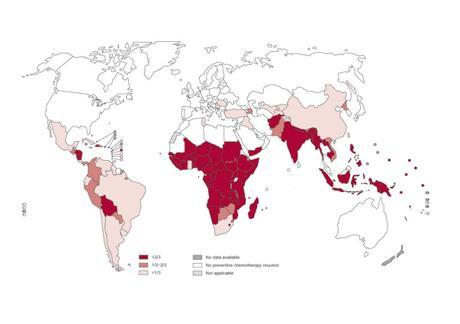 The Journal of Global Antimicrobial Resistance has published an interesting review article discussing the impact of scale up of drug donations to control neglected helminthiasis in the developing countries through aid-assisted preventive chemotherapy of vulnerable populations. The highlights of the article include:
The Journal of Global Antimicrobial Resistance has published an interesting review article discussing the impact of scale up of drug donations to control neglected helminthiasis in the developing countries through aid-assisted preventive chemotherapy of vulnerable populations. The highlights of the article include:
- Scale-up in drug donations for control of Neglected Tropical Diseases subject to Preventive Chemotherapy calls for monitoring drug efficacy.
- Monitoring efficacy of anthelmintics should be a component of any NTD control program.
- NTD disease-specific models to predict impact of Preventive Chemotherapy and detect outliers should be developed.
- Research studies to identify resistance markers for all NTD drugs are urgently needed.
- Development of drugs combinations as well as of new drug entities for NTD is a priority.
Considering the global slow down of antibiotic development and taking into account the lack of financial incentives for private players, investing in development of antimicrobial agents has become a rate limiting factor in the war against microbes. The way I see it, it is more lucrative to delve into development of drugs for chronic diseases like diabetes and hypertension, in which patients are on the medication for a lifetime, guaranteeing high return on investment made. By comparison, most infectious events, and especially neglected tropical diseases, happen to be acute events, which require only a short period of drug therapy. In addition, there are multiple humanitarian and altriustic forces at work when it comes to infectious diseases, which might not make for the best marketing models for inspiring private investments into drug development.
Coming back to the review on hand, this article builds up on the outcomes of the WHO Global Working Group on Monitoring of Neglected Tropical Diseases Drug Efficacy, which consists of three subgroups: (i) soil-transmitted helminthiases (ALB and MEB); (ii) onchocerciasis and lymphatic filariasis (IVM); and (iii) schistosomiasis (PZQ).
Keeping in mind that we have only a few drugs in our artillery to combat the NTDs, and that it is unlikely that there will be emergence of newer, novel drug classes in the near future, the premise of the WHO working group and the current review, therefore, becomes very important. Several strategies have been explored in this article in order to maximize the impact of the available drugs. Some of the more important ones include:
- Establishing non-responder zones where the disease pathogens have higher resistance rates or polymorphisms rendering them poor responders to monotherapy
- Developing combination therapies against NTDs to prevent emergence of resistance to any particular drug type
- Identifying other drug classes that maybe explored for further drug development
- Systematic program to evaluate drug efficacy in order to have early identification of emergence of drug resistance
- Developing best practices to monitor drug efficacy and integrating them within the programs for NTD control, especially within the ambit of monitoring and implementation.

Distribution of soil-transmitted helminthiases and proportion of children (aged 1-14 years) in each endemic country requiring preventive chemotherapy for the diseases, 2011. (Source: WHO)
Reference

